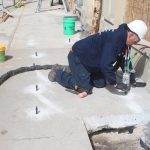**Concept 1: Definition and Types of Pressure**
– Pressure is the force applied perpendicular to an object’s surface per unit area.
– It is a scalar quantity that relates the area of contact with the force applied.
– Types of pressure include atmospheric pressure, gauge pressure, absolute pressure, and differential pressure.
– Pressure is fundamental in thermodynamics and is conjugate to volume.
– Various devices like manometers, barometers, and pressure transducers are used to measure pressure.
– High pressure systems are associated with clear skies and stable weather conditions, while low pressure systems are linked to cloudy skies, precipitation, and potentially stormy weather.
**Concept 2: Pressure Units and Conversions**
– The SI unit for pressure is the pascal (Pa), equal to one newton per square meter.
– Other common units include pounds per square inch (psi), bar, and barye (Ba).
– Meteorologists use hectopascal (hPa) for air pressure, and oceanographers use decibars (dbar).
– The standard atmosphere (atm) is defined as 101325 Pa.
– 1 atm is equivalent to 101.325 kPa or 14.7 psi.
– Pressure can be converted between different units like kPag, barg, psig, kPaa, psia, and d to express gauge, absolute, and differential pressure.
**Concept 3: Applications and Importance of Pressure**
– Pressure is crucial in various fields such as meteorology, oceanography, and diving.
– It helps determine sealing performance, valve operation, and designing structures to withstand external forces.
– Pressure plays a significant role in fluid dynamics and gas behavior.
– Proper measurement and management of pressure are vital in industrial processes and safety protocols.
– Monitoring pressure changes is essential in predicting weather patterns and natural phenomena.
– Pressure measurements ensure safety in applications like medical devices and aerospace technology.
**Concept 4: Fluid Pressure and Related Concepts**
– Fluid pressure is compressive stress within liquids and gases.
– Hydrostatic pressure is the pressure in non-moving fluids.
– Bernoulli’s equation helps determine pressure in fluids and assumes ideal, incompressible fluid.
– Fluid dynamics principles apply to closed fluid bodies.
– Kinematic pressure is defined as pressure divided by constant mass density and is used in Navier-Stokes equations.
**Concept 5: Specific Pressure Phenomena and Effects**
– Negative pressures can be encountered in specific situations and are important for medical procedures and industrial applications.
– Stagnation pressure is the pressure a fluid exerts when forced to stop moving and is related to static pressure and flow velocity.
– Surface pressure and surface tension are two-dimensional analogs of pressure.
– Vapour pressure is the pressure of a vapor in equilibrium with its condensed phases in a closed system.
– Total pressure in liquids is depth-dependent and includes atmospheric pressure.








Recent Comments